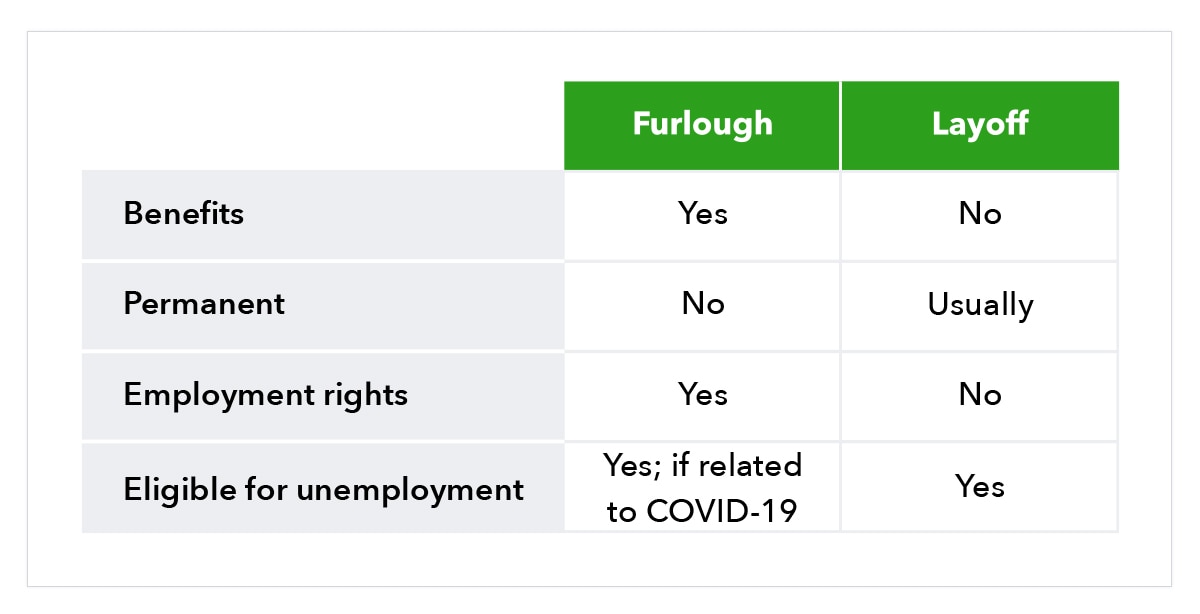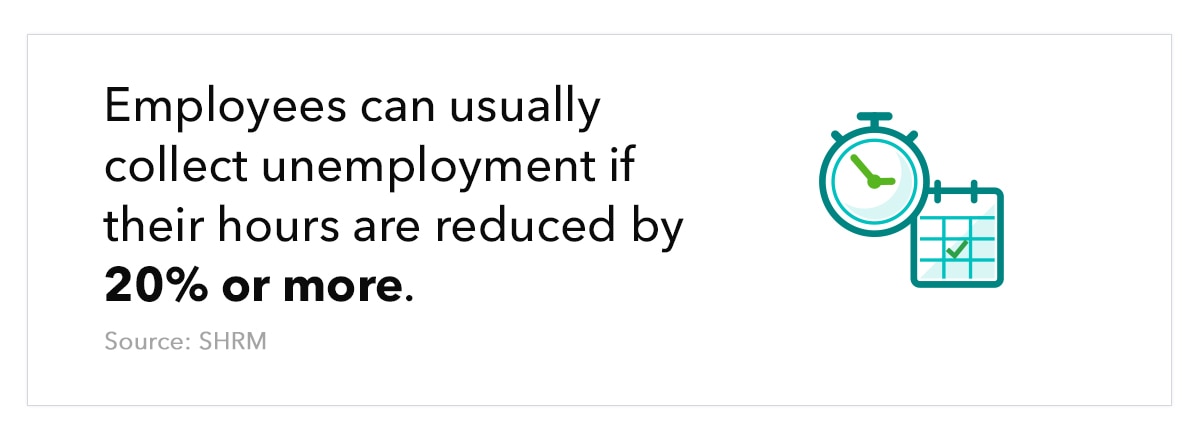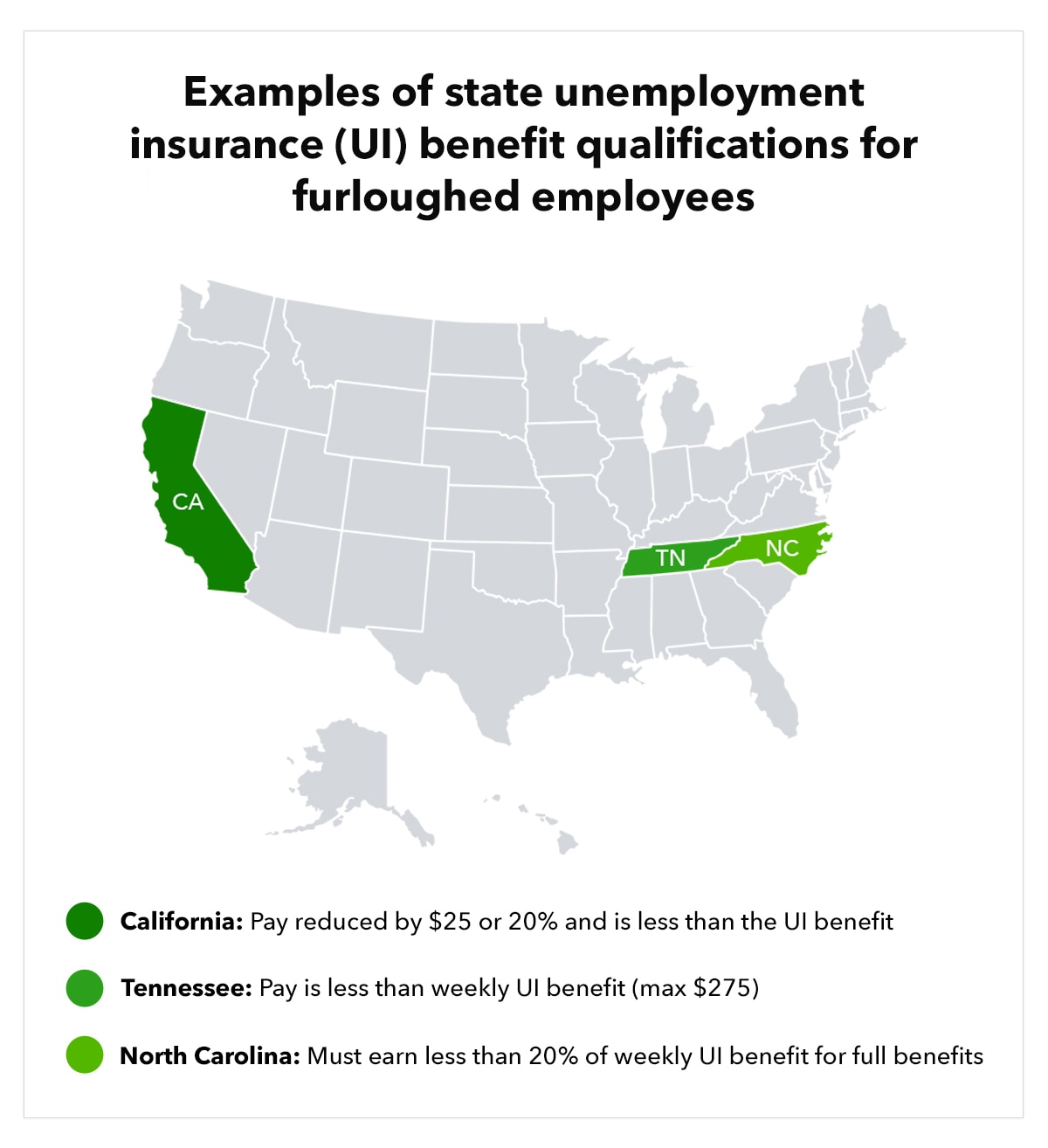Why would a company choose to furlough employees?
Furloughs are typically enacted when a company is facing a financial struggle that it believes will be short term. Implementing a furlough allows you to retain the workforce that you’ve invested in, while immediately saving money on payroll costs. If you’re considering furloughing employees, review the following pros and cons before making your decision:
Pros:
- Quickly cut expenses: The primary benefit of furloughing employees is saving payroll costs right now when you need to most.
- Avoid layoffs: If you’ve cultivated the ideal team for your business, you probably don’t want to lose them. Furloughs allow you to avoid full-on layoffs and hopefully retain as many employees as possible.
- Establish the furlough guidelines based on your needs: As the employer, you have the freedom to dictate the furlough parameters. This can be as minimal as requiring employees to cut just a few days a month or one week per month, to an undefined amount of time.
- Furloughs allow you to accommodate for slow seasons: Some businesses have regular furloughs according to their off-season, when they may not need as many or any employees.
- Minimal effort required to bring employees back: Since furloughed employees remain employed, you can easily bring them back to work without the administrative work necessary for laid off employees.
Cons:
- Risk of losing employees: While employees are still technically employed with your company, they may seek out other opportunities in the meantime. This means that when you’re ready to call employees back from furlough, you may find yourself needing to hire replacements.
- Must maintain contact with furloughed employees: Since furloughed individuals are still employed, it’s your duty to remain in contact with them to provide updates and answer questions. While this isn’t necessarily difficult, it does require your time and attention.
- Employees may have a hard time transitioning back to full-time: Going from a small portion of their workload—or no work at all—to working full time may be difficult for some. In this transition period, you may have to grapple with reduced productivity.
While there are some challenges to face, furloughing your employees could be beneficial to your business in the long run.
The hospitality industry is an example of how furloughs have been successfully implemented during COVID-19. Since many bars and restaurants have gone from open, to takeout only, to outdoor seating and takeout—and back—several times, they’ve turned to furloughs. Working staff a few hours a week for pickups has helped restaurants keep their staff intact. This way, they will be able to return their staff to work ASAP once restrictions are lifted and things go back to business as usual.
Hotels are another example of COVID-related furloughs. While many hotels and resorts have stayed open, they haven’t needed to operate at full staff. After all, many of their amenities, like pools, spas, and salons, have had to close as a result of COVID restrictions. However, once travel picks back up, they will need to get their services up and running at full capacity quickly to accommodate the increase in guests.


















